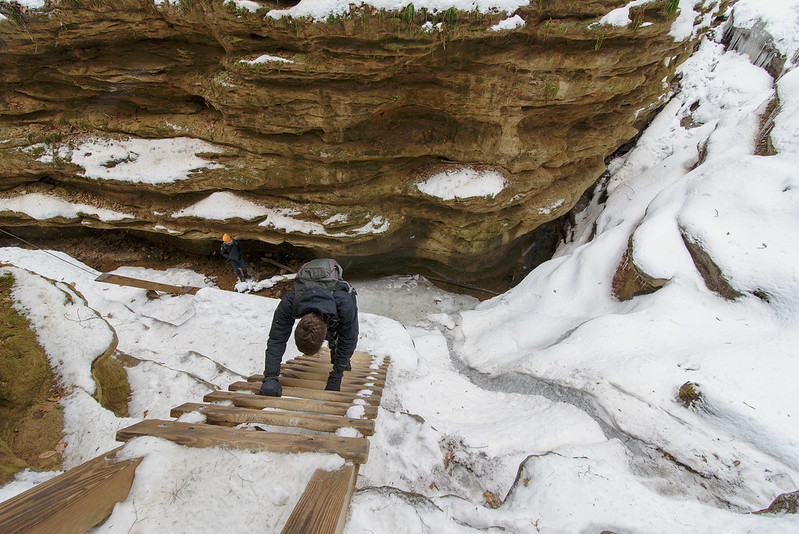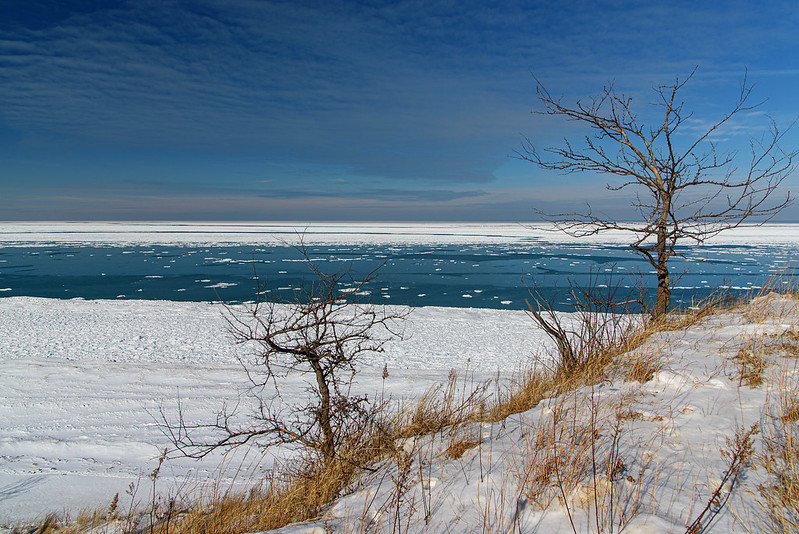
Once up the dune ridge trail, we made our way to the lake side of the dune. From this vantage point, the blowout could be seen, the area of the dune that was eroded from wind. Dunes are the most unstable landforms, and seeing a blowout reinforces this. No matter how much vegetation is on a dune, something can upset the balance and create a bare spot creating a blowout. Once established, a blowout will tend to increase in size as the edges erode further and further. The loose sand of the blowout will fall to the bottom of the dune, or can be blown over the top of the dune by high winds. Once the sand begins to blow over the dune, it is deposited on the leeward side, building the dune on that side. This is called a living dune, as the dune seems to move inland by itself.

The view of Lake Michigan from the top of almost any dune is spectacular, combined with sun and floating ice, it becomes even more special. This year, there is very little ice on the lake (so far) so any is a sight to behold. The beach in the photo above is about 80 feet below, and its about 700 feet north to the water. It doesn't look that high or distant until you begin to climb up, or walk to the water. A few trails can be seen if you look closely. On clear days, the Chicago skyline can be seen from this vantage point; the city is approximately 30 miles across Lake Michigan as the crow flies.

As dunes form and evolve, different vegetation begins to take hold. Here, conifer trees can be seen dotting the marram grass. They're generally the first wood to take hold, and seem to be declining in numbers here at the Indiana Dunes National Park, at least in my estimation. There are a few places where they seem to thrive, West Beach is one area, and it's very special to hike through these conifer micro-forests. The sights and odors are so different from the surrounding area.

















































